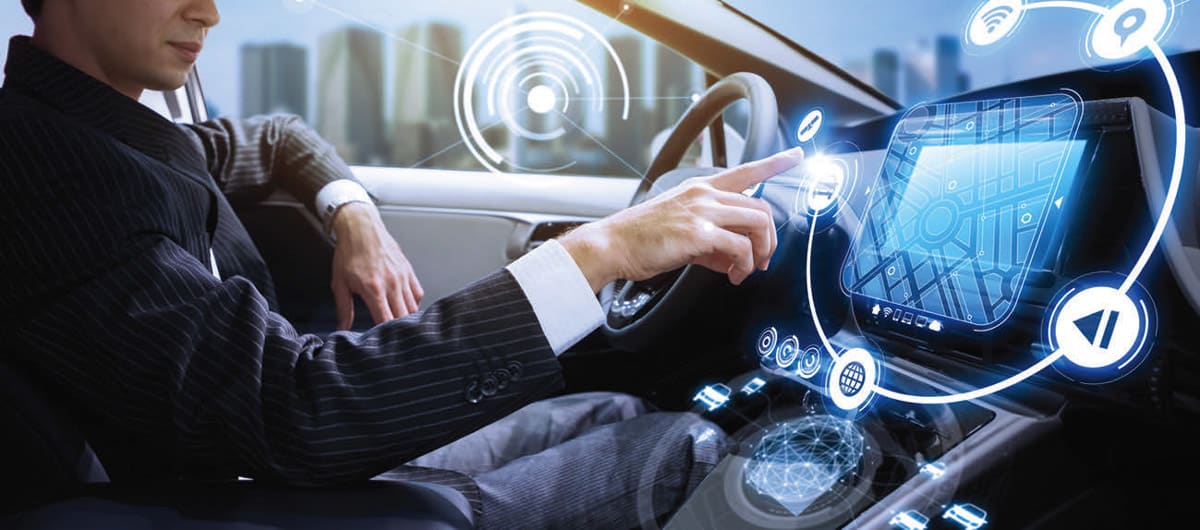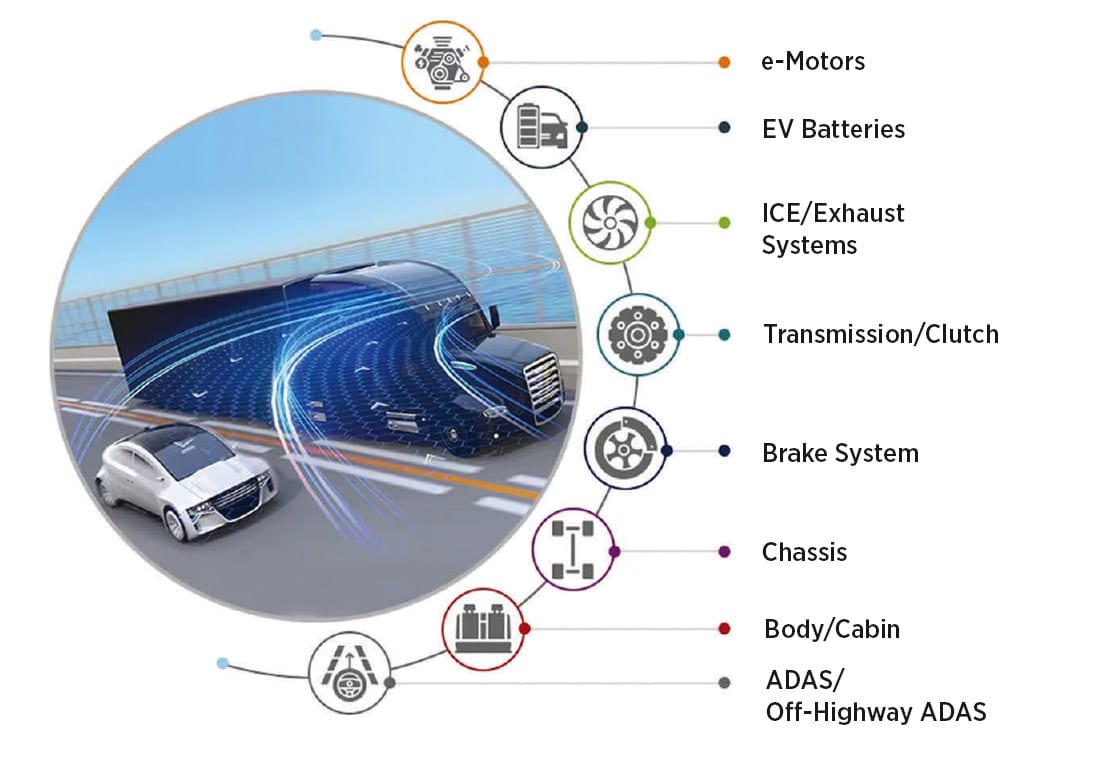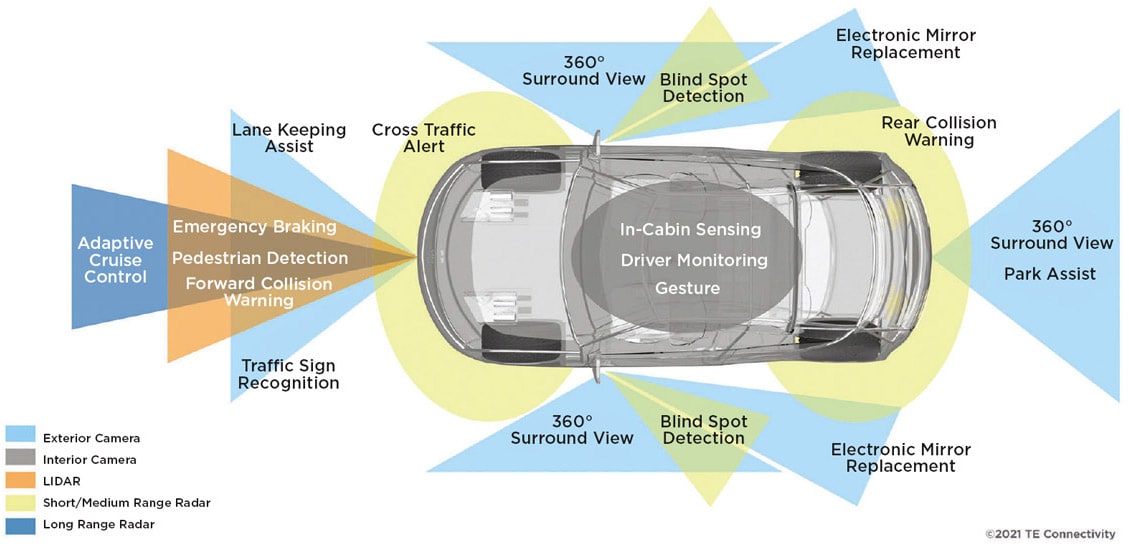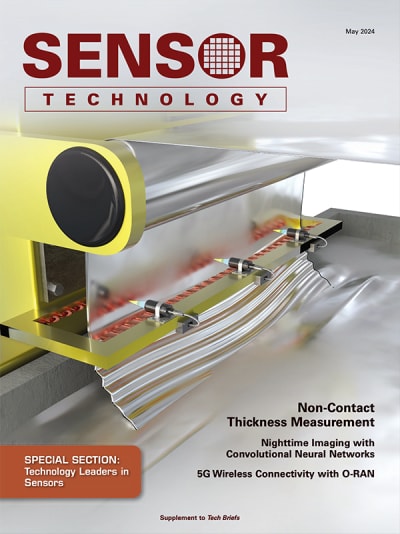
The pace of innovation in automotive and heavy-duty transportation is rapidly accelerating. Manufacturers are harnessing advancements in electrification and electronification, ushering in new levels of safety, comfort, infotainment, connectivity, performance, and sustainability.
Nearly all recent innovations in the automotive and heavy-duty transportation sectors hinge on the critical role of compact yet powerful sensors. These devices are now indispensable across a broad spectrum of vehicles, including cars, motorcycles, trucks, buses, construction, and industrial machinery. As a result, the transportation sensor market is witnessing rapid expansion and is expected to surge from around 30 billion dollars in 2024 to 40 billion by 2030.
What Does This Mean For Sensors?
The evolving landscape signals a shift for sensor technologies. Sensors are becoming increasingly relied upon to help boost vehicle performance and meet stricter safety standards. As we navigate away from traditional internal combustion engines towards hybrid and fully electric powertrains, there is increased demand for sensors that blend high precision, energy efficiency, and multifunctionality. Next-generation electric motors and transmissions aim to enhance power efficiency, ensure reliability, and validate operational integrity through a variety of position, speed, temperature, and pressure sensors.

Some of the critical sensors used in vehicle e-motors and transmissions include:
-
High speed variable reluctance resolvers, inductive resolvers, or magnetic resolvers for sensing rotor position and speed.
-
Temperature sensors for managing thermal conditions in a variety of applications across the vehicle. For example in e-motors, to provide protection from excessive heat as the systems try to maximize power and torque.
-
Pressure sensors used in numerous applications in conventional powertrains and in electrified vehicles. Some applications include monitoring brake pressure, coolant pressure in battery cooling systems, pressure in transmissions, and critical pressure monitoring in hydrogen fuel cells.
Highlighting e-motors as a case in point, passive transformer technology — resolvers — dominates the current market in rotary position measurement. However, given the demand for smaller, lighter, and more efficient sensors, OEMs are looking to integrate more compact and low-power active electronic sensors. This preference is rooted in the need for sensors that not only minimize space and energy consumption but also merge cost-effectiveness with the ability to perform precise calibration, improving both performance and accuracy.
For example, tunneling magnetoresistance (TMR) is an emerging sensor technology that provides low power consumption, and small size for e-motor applications.
Battery Monitoring
In line with this trend, advancements in battery technology — especially in enhancing power and reducing charging times through innovations such as solid-state batteries — reinforce the importance of sensors. Sensors help monitor performance through current and voltage measurements and improve adherence to safety standards by assessing the battery’s condition with temperature, humidity, and pressure indicators. The reliability and precision of sensor measurements, coupled with algorithms that process these inputs, are crucial for preserving the battery’s range efficiency and guaranteeing user safety over its lifetime.

Current and voltage sensors are used as inputs to the system’s battery management system (BMS) to accurately estimate the battery pack’s state of charge and state of health (SoC and SoH). This is extremely important in computing driving range, and for managing the charging/discharging profiles of the battery pack.
Temperature sensors are used to monitor battery pack temperatures to ensure safe operation as the systems push to maximum efficiency
Pressure and humidity sensors are used together or independently in battery systems to monitor changes in the battery pack (liquid leakage or pressure expansion) as early indicators of impending battery failure or thermal runaway.
Beyond Personal Vehicles
Innovations in efficiency continue to extend beyond personal vehicles, finding importance in the heavy-duty transportation and construction sectors, where the adoption of sensor technology is also rapidly expanding. As these sectors move towards cleaner fuels and electrification, the role of sensors is evolving. Integrating sensors with AI, cameras, and radar technology is a game-changer for safety and productivity, helping to spot potential hazards early and prevent accidents before they happen.
Oil property sensors are used to determine the “quality” of the oil in real time and make maintenance decisions as needed. They deliver real-time data on oil conditions such as viscosity, density, dielectric constant, and temperature. This enables proactive maintenance, significantly reducing repair times.
Recently, a heavy-duty multinational company reduced its repair intervals from six days to just two by adopting oil property monitoring sensors, helping to reduce vehicle downtime and improve profitability.
Software-Defined and Autonomous Vehicles
Radar, LIDAR, and cameras are the primary sensors used to detect the environment around the vehicle to enable autonomous driving, but these sensors need to work in combination with a host of other systems and sensors to ensure that the vehicle is properly behaving and reacting to the environment. Steering position sensors detect the exact position of the steering system, brake pressure sensors ensure the correct amount of brake pressure is applied, humidity sensors ensure the cameras are not fogged, and so on.
In the architectures of software-defined vehicles, systems with integrated sensors must support over-the-air updates to facilitate the introduction of new features as part of upgrade packages. Therefore, sensors require the flexibility to adapt through software updates, priming them for isolated activation, as OEMs begin rolling out monthly subscriptions for added-value services. The electronics in the sensor will therefore need to be upgraded to allow for two way communications.
Autonomous driving places sensors at the forefront of enhancing vehicle safety and efficiency. Through vehicle-to-vehicle (V2V) and vehicle-to-infrastructure (V2X) communications, autonomous systems enable vehicles to intelligently interact with their surroundings and each other. Sensors enable the vehicle to respond to dynamic operating conditions in real time, for example changing lanes or braking instantly to avoid a collision.
Wheel speed sensors with high resolution represent a leap forward in autonomous driving technology. By offering four times the resolution — improving position measurement accuracy — these sensors facilitate more accurate automated parking and enhance stability and safety features such as lane keeping, lane departure warnings, and precise vehicle positioning. Although wheel speed sensors alone are not used for these systems, accurate and precise wheel speed data is critical for enabling these applications.
Where We’re Heading
The next generation of sensors needs to maintain efficiency and cost-effectiveness while ensuring fast, accurate, and reliable communication. Sensors must seamlessly integrate with software and AI algorithms for precise environmental perception and response to help guarantee safe navigation in any scenario.
Establishing early and strategic partnerships between OEMs and component manufacturers is essential for success in this changing environment. Effective collaboration will help overcome traditional manufacturing barriers and enhance vehicle safety and performance. Sensors are at the core of this shift, accelerating innovation and enabling the creation of next-generation vehicles across various markets.
This article was written by Alex Chin, Vice President and General Manager for the Transportation Sensors business in TE Connectivity’s Sensor Group. For more information, go here .











